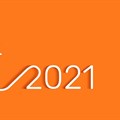What are we celebrating?
Officially, Africa Day marks the founding of the Organisation of African Unity on 25 May 1963. In reality, Africa Day is seen as an opportunity to celebrate cultural diversity and the many opportunities that arise from it. In business terms, this means being able to identify our blind spots and barriers when it comes to embracing, enabling and engaging a diverse audience, be it our employees, suppliers or clients and consumers.
Engaging the new global workforce
In 2021, whether we look to popular culture or the consumer, there is no denying the growing influence and importance of the multicultural market. Advertisers and the entertainment industry are aware of the importance of this growing market and their bias towards it, which is why virtually every large advertising agency today has a division that focuses on multicultural marketing. But what of our workforces? Now that the remote and hybrid Covid-19 workforce is a reality, suddenly the talent pool is able to stretch across cultures, countries and even time zones. Even if we confine our talent pool to the cultural borders within South Africa, we will be hard pressed not to find a more multicultural workforce breaking through them. Naturally, a more inclusive and diverse workforce is good news for businesses but it also presents some unique communications challenges, especially when it comes to internal communications. The key is to not wait for our workforces to outgrow our communications strategies and tools to the point where they become irrelevant and ineffective, but to seek out new tools to embrace and engage this new workforce as they grow and change the company culture, from within.
PR & Communicationsicandi CQ 19 Jan 2021
Perhaps the more culturally correct way to celebrate Africa Day is to make sure we are enabling and engaging a multicultural workforce, even before we celebrate it.
Top tips to enabling and engaging a diverse workforce
Conduct an internal communication deep dive
If you haven’t done a deep dive of your communications since lockdown, now is the time. This can be as simple as conducting a series of conversations with internal stakeholders to assess your strategies, policies and plans through the triple lens of diversity, equity and inclusion.
Include community representatives in campaign planning
If your communications team is not reflective of your greater employee base, then you might want to create a small community of representatives or champions from different cultural and social groups within the company to check in with. When planning big campaigns or business critical messages, this is the team you go to, to check key messages, cultural context, accuracy and relevance to make sure your messages land in a way that resonates with the audiences you are trying to reach. The aim is to do things with communities, not for them. The sooner you do that, the better.
PR & Communicationsicandi CQ 28 Sep 2020
Localisation not translation
With 11 official languages, South Africans know a thing or two about translating messages into local languages. But translation and localisation are not the same thing. Translation is merely the literal translation of a word or phrase, whereas localisation takes culture and context into account when translating the meaning of a message. It seems obvious but for most companies the default setting is still translation not localisation.
Set the tone for tolerance
Leaders and communicators need to set the tone for tolerance and constantly reinforce it. Consider implementing the LEARN acronym as a simple and effective communication strategy:
- Listen
- Effectively communicate
- Avoid ambiguity
- Respect differences
- No judgment
Use more visual communication
Words are infused with cultural meaning and bias. Where possible, create and use a visually-based communications language (such as symbols, color palettes, etc.) that embraces a universally understood message that needs no translation.
Set basic guidelines for email communications
In the remote working environment, email has become even more important to our daily communications. This means even more can get ‘lost in translation’. Create some basic rules to help your team communicate without offense or exclusion.
Simple things like:
- Keep the language simple and concise
- Avoid non-work-specific acronyms (or make sure you explain them)
- Take into account context and cultural nuances
- Be respectful of cultures and religions
Create an employee forum
One of the best ways to foster tolerance and understanding is to help your employees learn through each other’s experiences. By creating a forum for employees to share their experiences and realities, they end up teaching each other about their lives, instead of you dictating ‘cultural tolerance’ to them.
Management & Leadershipicandi CQ 1 Dec 2020
Make diversity training part of employee induction
The more diverse and inclusive our workforces become, the greater the need for diversity induction and training. Never assume that tolerance and respect mean the same thing to all people. Everyone has biases. No-one is 100% tolerant. We all need training in recognising, understanding and respecting different perspectives and approaches, especially when deadlines are tight and tensions are high.
If Africa Day stands for one thing, let it be to remind us that even while our continent is rich in diversity, it is how we embrace and enable it going forward that will decide how we progress as a continent and global leader.
Need help with your communications?
icandi CQ is a specialist internal communication, B2B marketing and brand agency. As relevant changemakers who unlock creativity for workplaces, we help companies build high performing, purpose-driven brands, from the inside out. Get in touch for solutions that deliver measurable results – from our custom-built employee app and other internal comms tools to employee surveys and internal communication programmes that enable a more inclusive culture.

